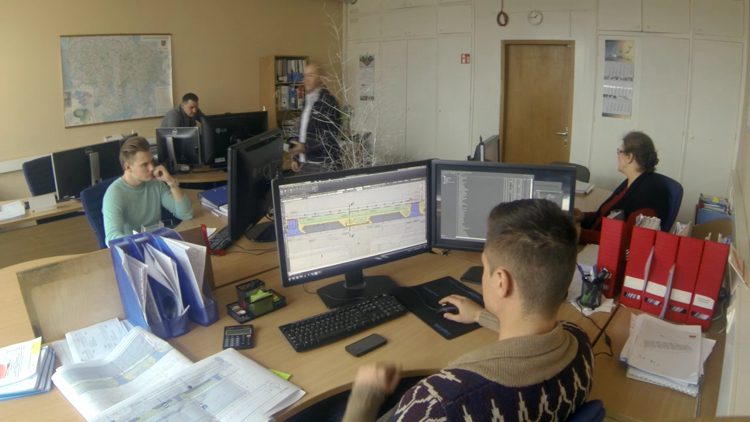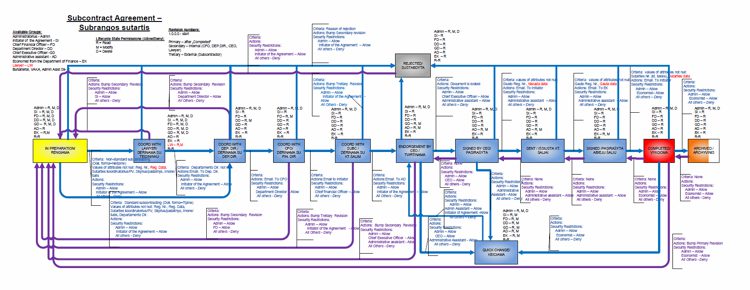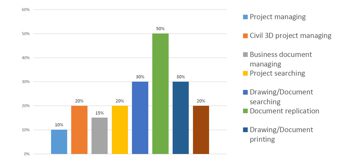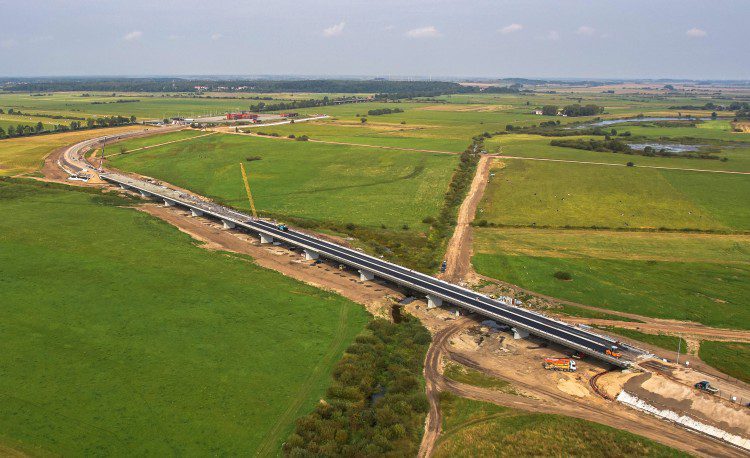Prioritizing Data Management: The Shortest Distance to Project Quality

By Darius Šimkūnas
In the Baltic States, Kelprojektas is the largest group of infrastructure engineering companies that designs transport infrastructure, public buildings and engineering systems as well as conducts regional planning. The company was established in 1956 and has successfully delivered more than 6,000 infrastructure projects. Today, there are more than 300 employees working with the most-advanced software, including the largest number of Autodesk-certified specialists in the Baltic States.
At Kelprojektas, the definition of project quality comes from company leadership.
“When I say we wanted to improve the quality of our projects, I mean more than the final output,” wrote Algimantas Medziausis, CEO of Kelprojektas. “The project delivery and output is very important to us, but we want quality to start from the beginning of the project. So the process itself needs to be efficient and allow us to make the best decisions. We need to be able to minimize errors or issues that slow the process.”

Lithuanian design-team members are located across Lithuania and other Baltic States, making collaboration challenging without data-management tools.
Intelligent Workflows
Building Information Modeling (BIM) is central to Kelprojektas’ strategy to deliver higher-quality projects, and the first priority is to optimize the design process.
To reach the desired level of quality requires changing the way its teams work by improving how they share and collaborate on projects. Projects typically take three to five years, and the company uses a file-share server that provided limited communication among offices.
For example, a recent Rail Baltica project featured a team from different locations and offices in Lithuania. They used Civil 3D to create BIM models across different disciplines (e.g., piping, bridges, electricity, roads, rail), and everyone works as a team. But managing such data loads in a file-share server was challenging, and it was difficult for project managers to ensure that tasks were completed properly and on time. In the journey toward BIM implementation, Kelprojektas determined that improving data management had to become an integral part of the process.
“If you ask me to articulate the biggest risk with our previous data-management process, I would say that we could be out of sync with the data and that could lead to misunderstandings,” says Benas Berkmonas, chief of Road Department, Kelprojektas. “Let’s say you have the wrong version of the file that an entire group is using—assuming they are on the most current version. This could cause project delays and affect project time, cost and quality of deliverables.”
The importance of smooth collaboration is understood, with the need to have the correct data at the proper place and with everyone aware of the data. With this goal in mind, the company set out to find an effective document- and project-management tool that would help improve client service, ensure project quality and show real business benefit.
Evaluation and Selection
Evaluation began with a large wishlist of features. Company projects have a lot of moving parts that involve a lot of different disciplines, often working with different design software: AutoCAD LT, AutoCAD Civil 3D and MicroStation. Furthermore, the company wanted to automate certain steps of the design workflow, and it wanted a tool with a role in daily operations.
“The results from the analysis and testing motivated us in our decision,” recalls Berkmonas. “It was a clear choice for us.”
After in-depth analysis of 10 different software applications, Kelprojektas chose Autodesk Vault Professional for its ability to conduct work in a single “virtual” place for each project. Each software was compared against a long list of requirements, and the company conducted pilot projects with two different data-management solutions.
Working with engineering documents, it was important to move through project stages in a linear manner. But the company wanted to be able to jump from one stage to another when required. Compared to Vault, testers came across limitations with other tools when it came to being iterative.
“There were many reasons why we chose Vault Professional, but I can’t stress enough the importance of access to the data by multiple design tools,” says Arvydas Čibirka, Deputy of CEO/CTO, Kelprojektas. “Even though you have a very difficult and complex project, you always have some task that can be done in 2D: road markings, drafting works, etc. For these tasks, we can use AutoCAD LT, and the BIM tools are used for the additional tasks. With Vault, our AutoCAD LT users can use all data-management solution advantages that Civil 3D and MicroStation users had, because with Vault Professional we could integrate to AutoCAD LT. It was the only DMS that could integrate to AutoCAD LT. This was very important to us.”
To add to the complexity, projects can take three to five years, and it’s important to have traceability to know what’s happening with each project.

Implementing the Solution
With Vault Professional, Kelprojektas can manage data development, modeling and documentation processes, which helps with work efficiency and supports higher quality.
The entire project is managed from a single place, with the following benefits:
- Working effectively in a team with remote subdivisions
- Ability to go back several versions
- Seeing where a file is used and by whom
- Open files are stored on local disks, making work with files faster than on a network
- Users can work with files offline
In a recent Via Baltica project, the company used Civil 3D for roads and piping. With such a large project, it’s important to have smooth collaboration, and Vault plays a key role. In addition, this was a non-typical team with members spread out geographically:
- Railroad designers in Vilnius
- Bridge designers in Kaunas
- Topography and geography in Kaunas
- Some road designers and piping in different offices across Lithuania
This team also works with different software, starting from AutoCAD LT and ending in MicroStation. Vault has full integration of such software, allowing for work in a single place, and outside partners are accommodated via Autodesk Buzzsaw.
“In our Estonia project, a 30-kilometer highway, we built the team in a non-standard way,” notes Berkmonas. “One part of the team is located in the Estonia office, and another part is located across different offices in Lithuania. So Vault and Civil 3D allows us to build a cohesive team, and they’re all working together in one place in Vault as though they are in one location. Before we refined our data-management processes, this was not possible, or it was more limited.”

Business Results
Kelprojektas feels it has gained a great deal by improving project data workflows. It improved data security and the time it takes to perform certain tasks, meets goals for making better and faster decisions, and meets quality standards for document management.
Before, managing such a mass of data with a file-share server was challenging. It was difficult for project managers to make sure everything was done on time and in the right way. With Vault, this is done more efficiently to save time, improve efficiency and offer better quality.
The company has been studying time-savings for each task, from managing the project to search, replication and printing. It met goals to create faster problem solving and organizational collaboration. All Kelprojektas offices now operate in one system with greater efficiency, which was made possible by including the following:
- Search and attributes
- Filtering documents according to attributes or lifecycle stages
- Formulating tasks for individuals and other colleagues
- Generating reports
With the new solution, a project resides in a single place and is accessible to all members, limits on responsibility are defined, more efficiency is gained when no one needs to question or search for the latest and correct file, and misunderstandings and duplication of effort are avoided with increased transparency.
The lifecycle approach gives Kelprojektas the ability to manage business processes and engineering documents with a clear workflow, where steps can be automated. Projects move through stages in a linear manner, but can jump from one stage to another depending on the situation. Defining access and usage rights for documents as well as which users can move from one stage to another has helped save time and keep all users consistent.

Custom Reports
Effective document notifications and search options eliminate time-consuming manual processes and improve work efficiency. To achieve these gains, Kelprojektas implemented document registers, a search system, reports and notification systems.
Lifecycle is the key element for its project-management approach, with notices to different teams to be aware of file status and be sure it’s not edited without proper notice. Security level is based on lifecycle state, and each file has permissions regarding who can work on it. Automated processes include e-mail notifications, PDF/DWF generation and more to streamline data delivery.
“We are setting limits to the possibilities, not the technology,” says Čibirka. “The lifecycle approach allowed us to implement most of our complex business processes. And then the job server and additional sub-applications expanded the possibilities even more. With detailed reporting, managers can closely follow the progress of a project.”
In late 2014, Kelprojektas had approximately 20 lifecycles, 40 categories, more than 150 custom attributes and 76 running projects in Vault. Among these projects is Rail Baltica, a nearly 1,200-kilometer railway line for passengers and goods moving between the Baltic States and Poland as well as among the Baltic States and other European Union countries through Warsaw. Kelprojektas is responsible for many design projects for Rail Baltica, which is to be completed in 2020.
Expecting a Return
The company now is working to measure the return on investment (ROI) since implementing its new data-management workflow. ROI equals the investment cost minus revenue on the projects, factoring in:
- Investment in licenses and maintenance
- Hourly rates of local resources
- Hourly rates of outsourced resources
- The value of time saved
“In the formula, we can’t account for project quality that relates to a more-satisfied client and ultimately better relationships, more projects and more contracts—all leading to more potential revenue,” says Medziausis. “For example, in Sweden, if we deliver a project earlier than anticipated, with a happy client, we might see extra bonus money.”

For the Rail Baltica projects, different disciplines were located in multiple offices, so cloud-based tools were critical for collaboration.
Recognition of Excellence
In major projects, file lifecycles play an essential role, as they identify clear responsibilities for document modifications. They can show modifications in DWG files immediately, which saves a lot of time, and helps avoid human errors and misunderstandings. Kelprojektas’ experts always know the latest document versions and have direct access to them, which improves the accuracy of consolidated reporting.
Kelprojektas received several innovation and quality awards in Lithuania for its continuous investments in innovative design technologies, and improved business processes and people. The Lithuanian Business Confederation acknowledged Kelprojektas’ application of Vault in road and street design with The Service of the Year 2014 award in the Most Intellectual Workplace category.
“Being recognized for our improvements is a wonderful thing, but knowing we did the best we could on a project is reward enough,” says Medziausis. “Success to us is a project that is completed on time and offers the best solution for our customer. The working process is smooth and clear, and all stakeholders—engineers and customers—are happy about the work-in-process and end result.”
RESOURCES
For more details on evaluation and benchmark processes, visit the Web at:
- Video Interview
- Why Data Management is important to civil engineering
- How Kelprojektas chose and implemented a data management solution
Darius Šimkūnas is the chief information officer and BIM strategist at Kelprojektas; e-mail: [email protected].


